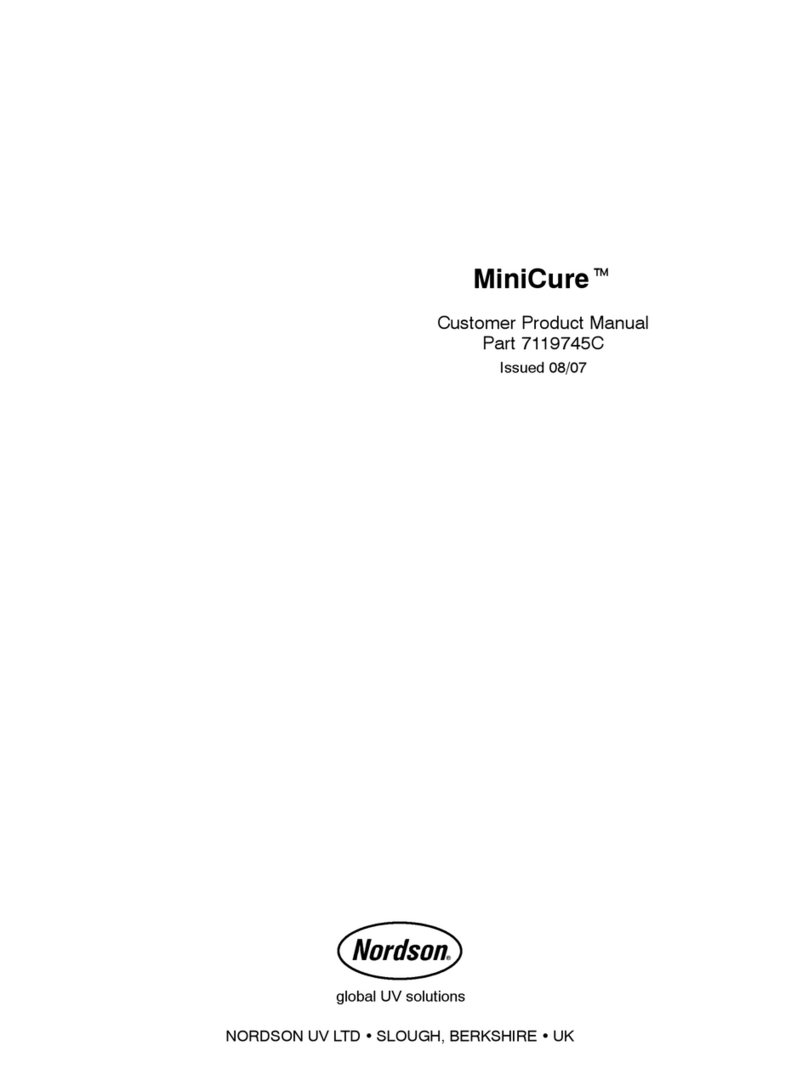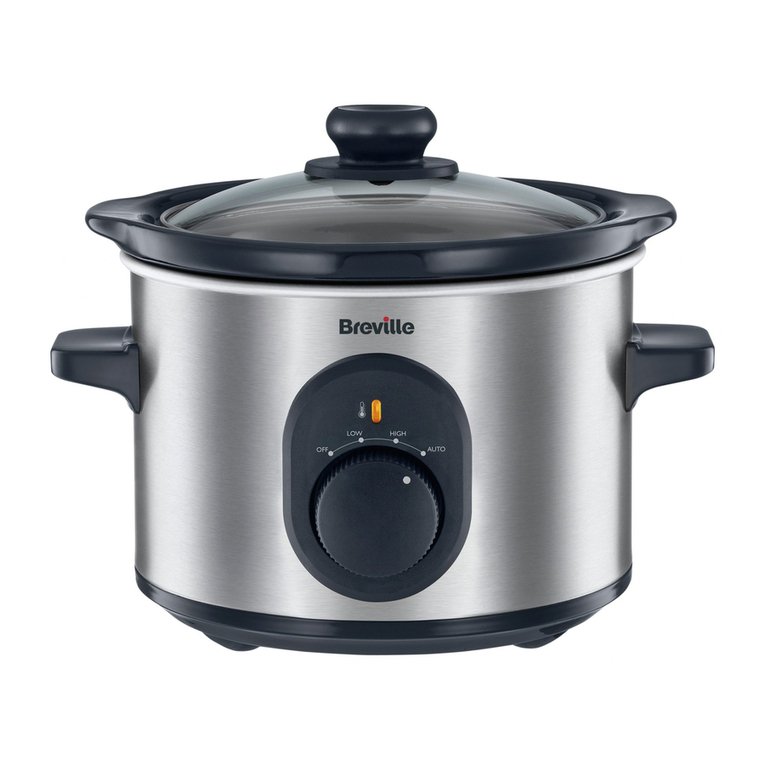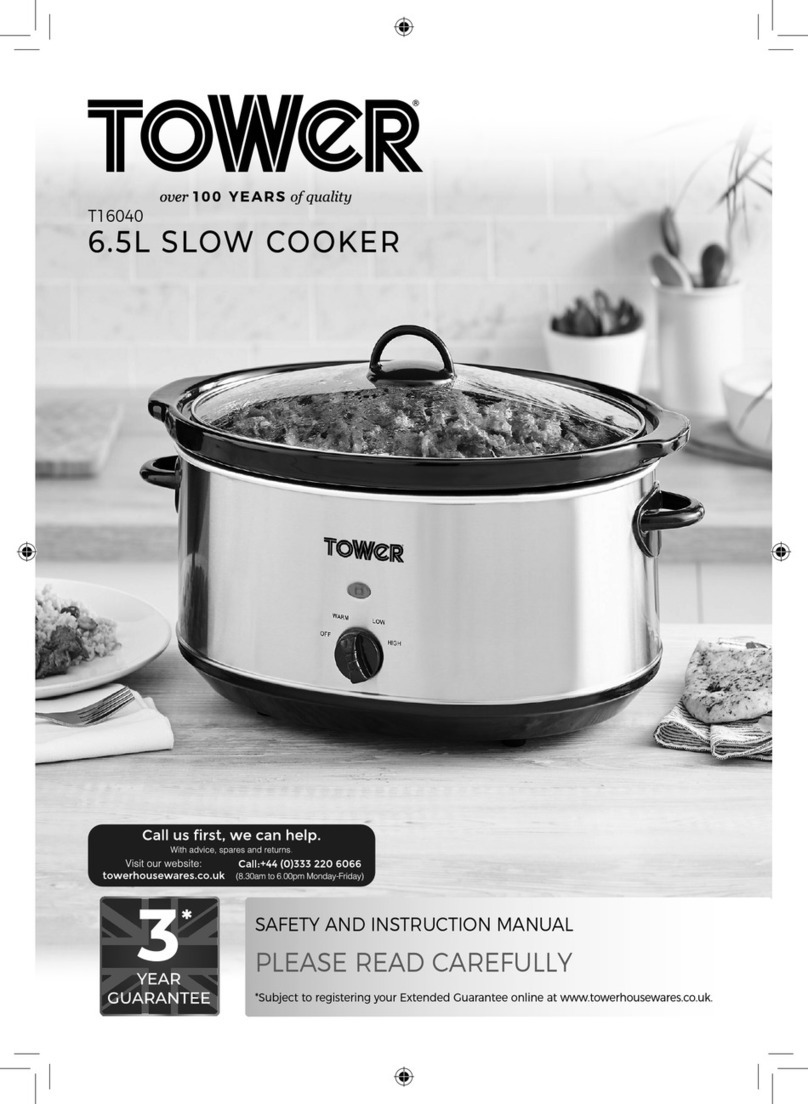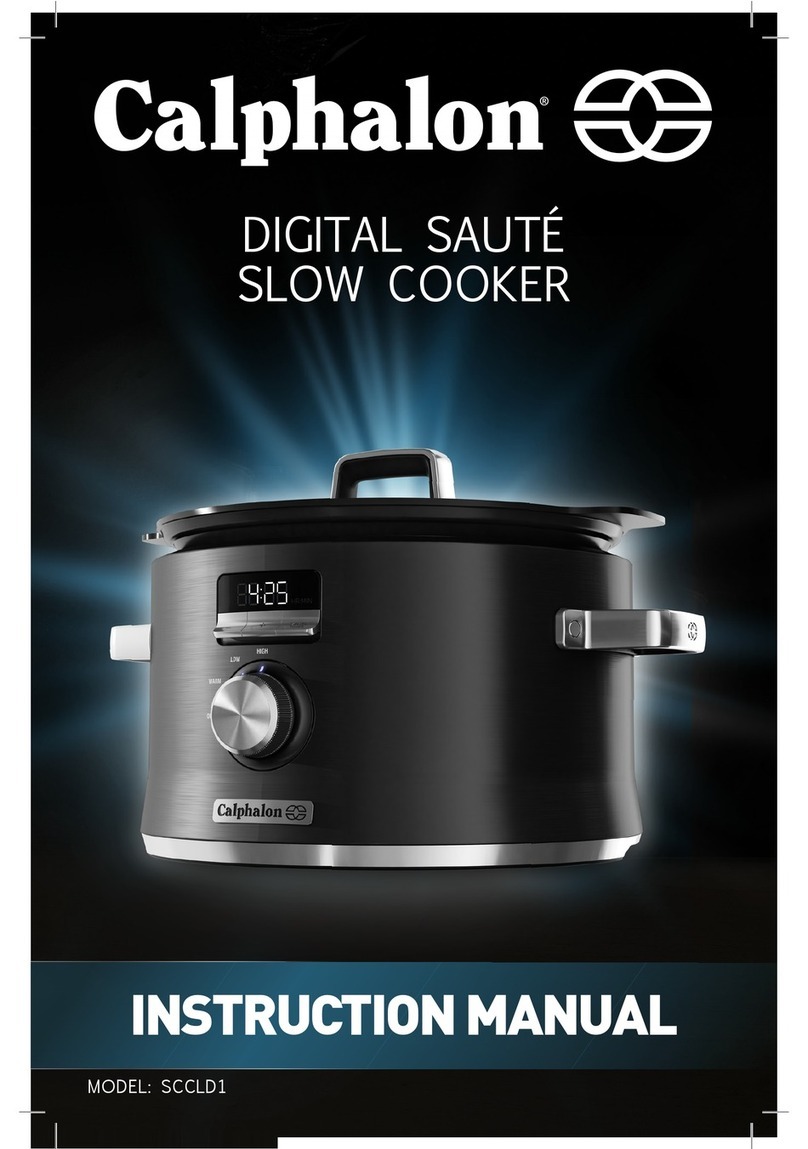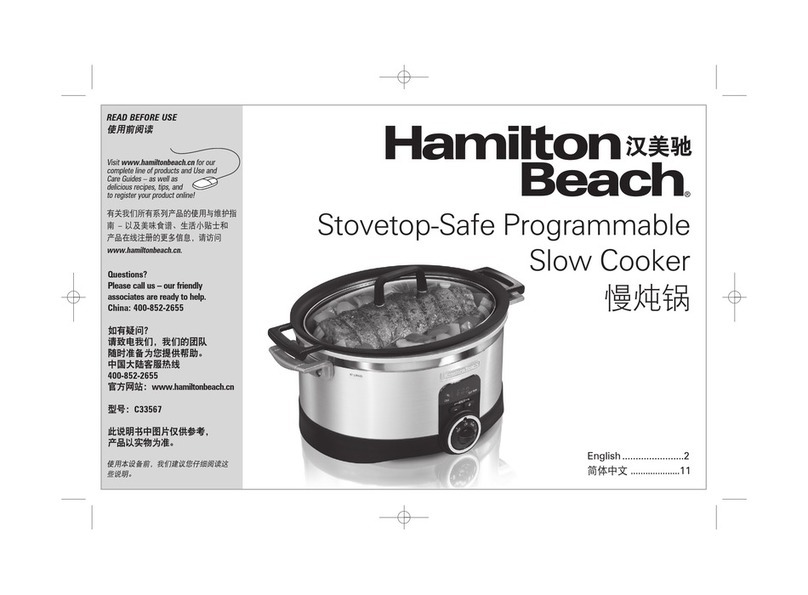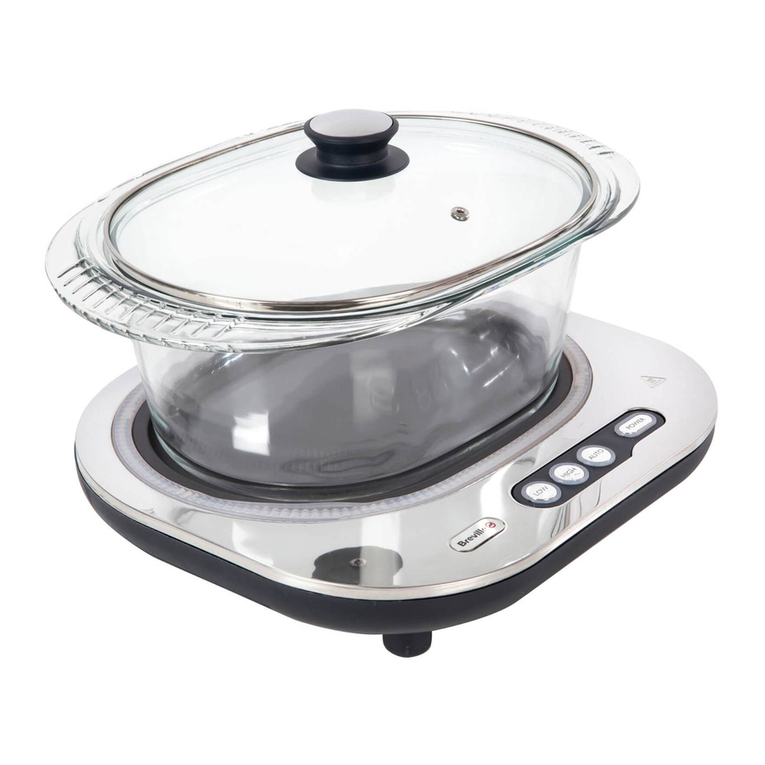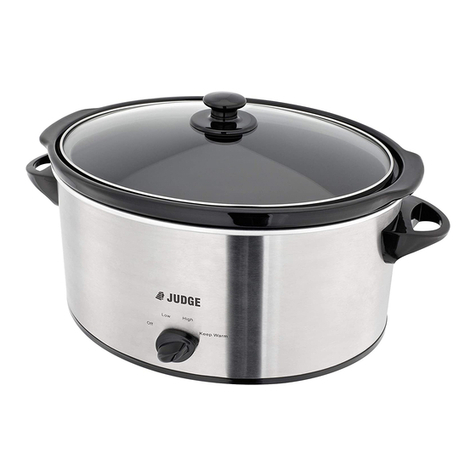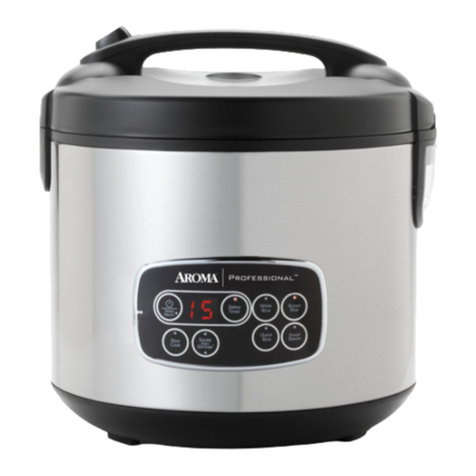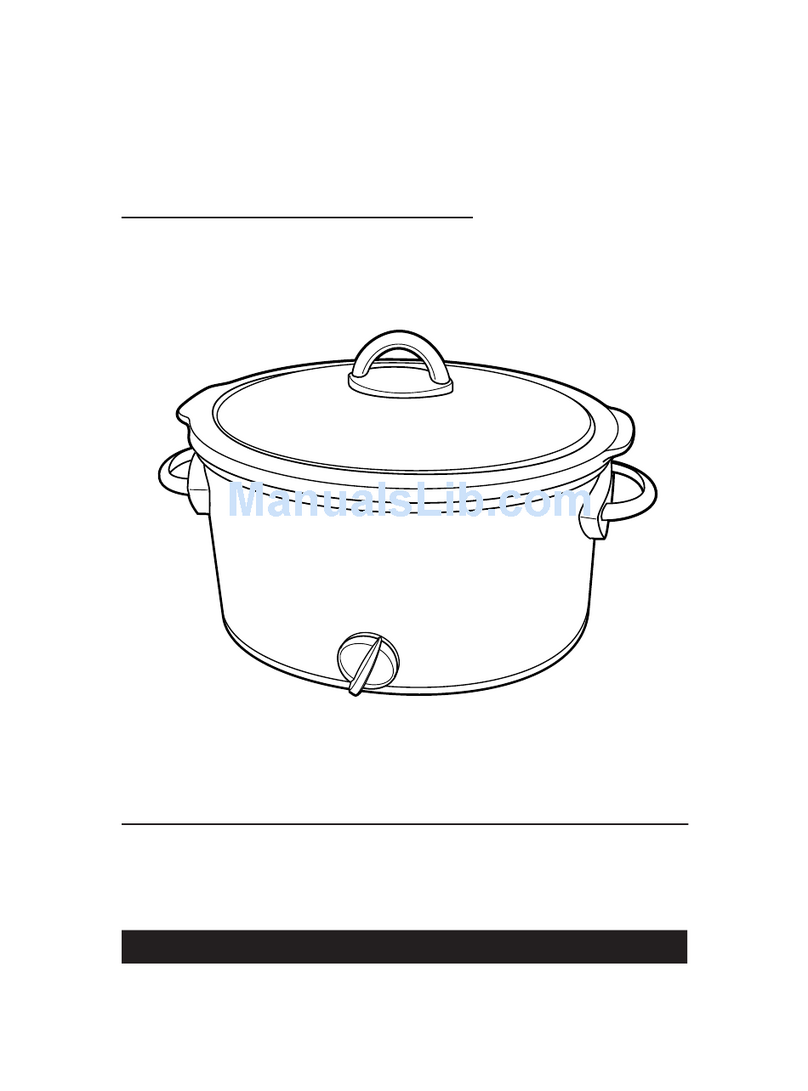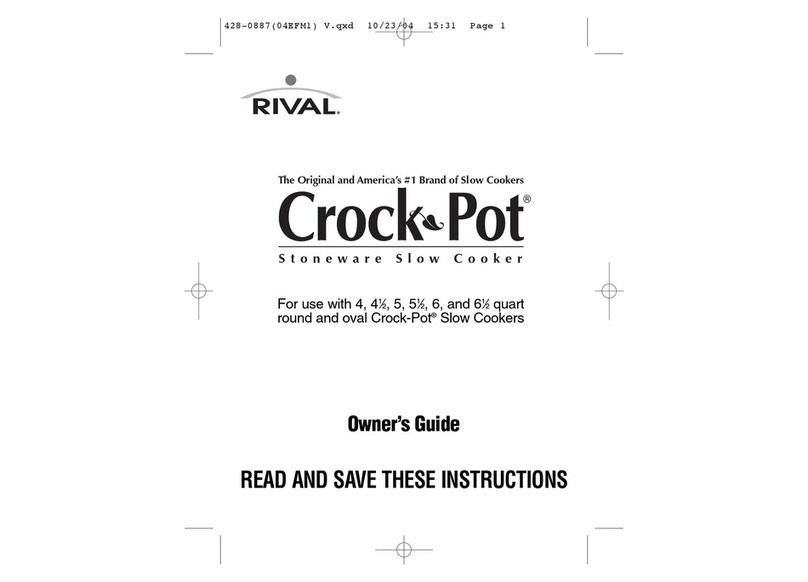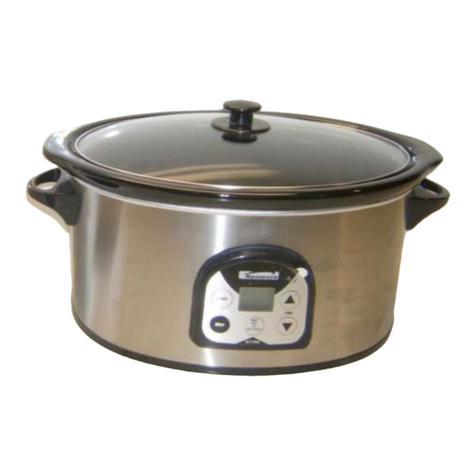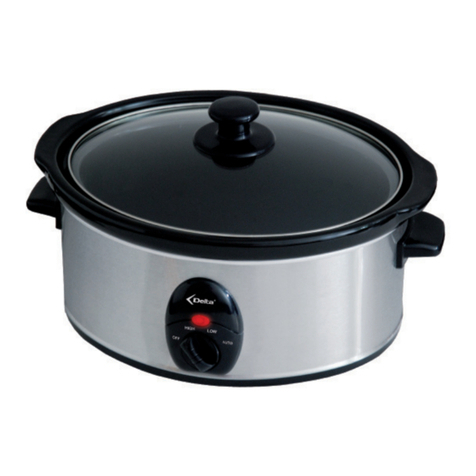Germatic WWS-27.1 User manual

Bedienungsanleitung
Instrucn Manual
WWS-27.1
Made in P.R.C.

WWS-27.1 Deutsch
1.Bitte lesen Sie vor der Benutzung alle Anleitungen
aufmerksam durch. Vergewissern Sie sich, dass Ihre
Netzspannung mit den Angaben auf dem Typenschild
übereinstimmt.
2.Tauchen Sie das Gerät nicht in Wasser oder sonstige
Flüssigkeiten ein.
3.Benutzen Sie das Gerät nicht mit beschädigtem Netzkabel.
4.Ist das Gerät oder das Netzkabel beschädigt, so wenden
Sie sich bitte an einen autorisierten Kundendienst. Nehmen
Sie Reparaturen bitte nicht selbst vor.
5.Benutzen Sie das Gerät nicht mit leerem Tank.
6.Benutzen Sie das Gerät nicht in unmittelbarer Nähe eines
Gas- oder Elektroherdes, vorgeheizten Ofens oder
sonstiger Wärmequelle.
7.Stellen Sie das Gerät auf einer stabilen und ebenen
Arbeitsfläche auf, halten Sie Abstand zur Kante, damit es
nicht hemnterfallen kann.
8.Führen Sie das Netzkabel nicht über scharfe Kanten.
9.Vor dem Reinigen oder Anbringen von Zubehörteilen
schalten Sie das Gerät aus, ziehen Sie den Netzstecker
und lassen Sie es vollständig abkühlen.
10.Benutzen Sie das Gerät nicht im Freien.
11.Berühren Sie keine heißen Flächen des Geräts, fassen
Sie es nur an den Griffen an. Benutzen Sie
Ofenhandschuhe, wenn Sie den Deckel anheben oder das
Gerät umsetzen.
12.Ziehen Sie bei Nichtbenutzung stets den Netzstecker.
13.Schalten Sie das Gerät nicht ein, wenn es auf der Seite
liegt oder auf dem Kopf steht.
WICHTIGE SICHERHEITSHINWEISE

14."Dieses Gerät kann von Kindern ab acht Jahren und älter
sowie von Personen mit eingeschränkten physischen,
sensorischen oder mentalen Fähigkeiten bzw. Mangel an
Erfahrung und Kenntnissen verwendet werden, sofern sie
zuvor in der sicheren Benutzung des Geräts unterwiesen
worden sind und die einhergehenden Gefahren verstehen.
15.Kinder dürfen mit dem Gerät nicht spielen.
16.Reinigungs- und Instandhaltungsmaßnahmen dürfen nur
von Kindern über 8 Jahren und unter Aufsicht
durchgeführt werden.
17.Gerät und Kabel dürfen nicht in die Hände von Kindern
unter 8 Jahren gelangen."
18.Das Gerät ist nicht dafür vorgesehen, über eine externe
Zeitschaltuhr oder separate Fernbedienung gesteuert zu
werden.
19.Bei Beschädigung des Netzkabels ist dieses durch den
Hersteller, einen Kundendienstmitarbeiter oder eine in
ähnlicher Weise qualifizierte Person auszutauschen, um
eine Gefährdung zu vermeiden.
BEDIENUNGSHINWEISE
1.Stellen Sie die Basiseinheit auf einer ebenen und
hitzebeständigen Arbeitsfläche auf, halten Sie Abstand zur
Kante. Nicht auf dem Fußboden aufstellen.
2.Mit dem Schalter auf „ OFF“ stecken Sie den Netzstecker in die
Steckdose.
3.Geben Sie die Zutaten in den Topf.
4.Stellen Sie den Temperaturregler auf die gewünschte Stufe,
40°C, 50°C, 60°C und so weiter. Beim Erreichen der
eingestellten Temperatur schaltet sich die Kontrollanzeige aus.
Soll das Gerät ständig kochen, so stellen Sie den
Temperaturregler ganz nach rechts.
5.Nach der Benutzung schalten Sie das Gerät aus und ziehen Sie
den Netzstecker.

Vorsicht:
Berühren Sie keine heißen Flächen, warten Sie stets, bis sich das
Gerät abgekühlt hat. Füllen Sie das Gerät zwischen den Marken
Min und Max.
Vor Erstbenutzung
Entfernen Sie alle Verpackungsmaterialien.
Waschen Sie den Topf mit heißem Wasser aus, spülen Sie nach
und trocknen Sie ihn gut aus.
Hinweis:
Tauchen Sie die Basiseinheit nicht in Wasser ein.
Bei Erstbenutzung haben Sie etwas Geruchsentwicklung. Dies ist
harmlos und vÖl ig normal und dauert nur einen kurzen Moment.
Bitte achten Sie auf ausreichende Lüftung.
Für Slow Cooking geeignete Speisen
1.Der Crockpot ist zur Zubereitung der meisten Speisen geeignet,
beachten Sie jedoch bitte die nachstehenden Hinweise.
2.Benutzen Sie keine gefrorenen Zutaten.
3.Schneiden Sie Wurzelgemüse in kleine Stücke, da diese eine
längere Zubereitungszeit als Fleisch benÖtigen. die sollten
zunächst für 2 bis 3 Minuten gedünstet werden. Wurzelgemüse
sollte stets unten im Topf liegen und alle Zutaten müssen mit
der Kochflüssigkeit bedeckt sein.
4.Schneiden Sie überfl üssiges Fett vor dem Kochen vom Fleisch,
da beim Slow Cooking Fett nicht verdunstet.
5.Benutzen Sie ein herkÖmlTlliches Kochrezept als
Ausgangsbasis, so müssen Sie weniger Flüssigkeit verwenden.
Die Flüssigkeit verkocht nicht, wie beim herkömmlichen Kochen.
6.Lassen Sie keine ungekochten Speisen bei Zimmertemperatur
im Crockpot.
7.Benutzen Sie den Crockpot nicht zum Aufwärmen von Speisen.
8.Ungekochte rote Bohnen müssen vor der Zubereitung im
Crockpot wenigstens für 10 Minuten eingeweicht und gekocht
werden, um Giftstoffe zu entfernen.

9.In Braten oder Hähnchen stecken Sie bitte ein
Fleischthermometer, damit gewährleistet ist, dass sie mit der
richtigen Temperatur zubereitet werden.
Slow Cooking Tipps
1. Der Crockpot muss für beste Ergebnisse wenigstens halb
gefüllt sein.
2. Slow Cooking erhält die Flüssigkeiten. Wollen Sie diese
verringern, so öffnen Sie den Deckel nach dem Kochen und
stellen Sie die Temperatur auf 30°C ein, verringern Sie die Zeit
zum Simmern um 10 bis 20 Minuten.
3. Der Deckel ist nicht passgenau. Nehmen Sie ihn nicht
unnötig ab, da hierdurch Hitze entweicht. Für jedes Anheben
des Deckels verlängern Sie die Kochzeit um 10 Minuten.
4. Die meisten Gemüse- und Fleischrezepte benötigen 5 bis 7
Stunden bei 90°C oder 4 bis 6 Stunden bei 100°C.
5. Benutzen Sie keine gefrorenen Zutaten, ohne diese zunächst
aufzutauen.
6. Einige Zutaten sind nicht geeignet. Pasta, Meeresfrüchte, Milch
und Sahne sollten erst gegen Ende der Zubereitungszeit
hinzugefügt werden. Ziele Faktoren bestimmen die
Zubereitungszeit, Wasser- und Fettgehalt, Ausgangstemperatur
der Zutaten und die GrÖße der Zutaten.
7. Klein geschnittene Zutaten kochen schneller. Experimentieren
Sie für beste Ergebnisse mit Ihrem Crockpot.
8. Gemüse sollte stets in der unteren Hälfte im Topf liegen, da es
gewöhnlich eine längere Zubereitungszeit benötigt.
9. Alle Zutaten müssen mit der Kochf lüssigkeit bedeckt sein.
Bereiten Sie diese (Soße oder Brühe) getrennt zu.
REINIGUNG
Ziehen Sie den Netzstecker und gießen Sie die Reste aus.
Lassen Sie das Gerät vor dem Reinigen vollständig abkühlen.
Deckel und Topf können normal abgewaschen werden.
Für das Gerätegehäuse benutzen Sie bitte ein feuchtes Tuch,

reiben Sie es anschließend trocken. Benutzen Sie keine
Scheuermittel, um Kratzer zu vermeiden.
Technische Spezifikationen
Netzspannung: 220-240V~50Hz
Leistung: 1800W
Entsorgung
Dieses Symbol auf dem Produkt zeigt an, dass Ihr
Elektro- oder Elektronik-Altgerät von Haushaltsabfällen
getrennt entsorgt werden muss.
Die WEEE-Richtlinie (von engl.: Waste of Electrical
and Electronic Equipment; deutsch: Elektro- und Elektronikgeräte
-Abfall) (2012/19/EU) wurde etabliert, um Produkte unter
Verwendung der bestmöglichen Recyclingtechniken
wiederzuverwerten, um die Auswirkungen auf die Umwelt zu
minimieren, gefährliche Substanzen zu behandeln und weitere
Deponien zu vermeiden. Wenden Sie sich für weitere
Informationen über die korrekte Entsorgung von Elektro- und
Elektronikgeräte-Abfall bitte an Ihre örtlichen Behörden.

WWS-27.1 English
1. Before using the appliance, Read all instmctions carefully.
and check if the voltage indicated corresponds with the
electric outlet.
2. To protect against the rise of electrical shock do not put
base in water or any other liquid.
3. Do not use the appliance if the cord or plug is damaged, it
should be replaced before using.
4. If the appliance has went wrong or cord or plug is
damaged,which need replace and repair by service
department or a qualified & professional man.never try to
disconnect appliance by yourself.
5. Do not use the appliance if the tank is empty.
6. Do not place the appliancer near gas stove, electric burner
or heated oven or any flammable sourcing
7. Put the appliance on flat & stable surface, keep it away
from the edge of counter to avoid accident.
8. Never hang the power cord in sharp edge or hot surface.
9. Unplug the unit from the electric outlet, and allow to cool
OFF before putting ON or taking OFF parts and before
cleaning the appliance.
10.Do not use outdoors.
11.Never touch the outer enclosure during its operation or
before it cools,use the handles or knob,Do not touch hot
surfaces, using oven gloves when removeing lid or
handling hot container.
12.Never leave the appliance connected to the socket when
not in use.
13.Do not switch on the appliance when it is upside down or
laid on its side.
IMPORTANT SAFEGUARDS

14.“This appliance can be used by children aged from 8
years and above and persons with reduced physical,
sensory or mental capabilities or lack of experience and
knowledge if they have been given supervision or
instruction concerning use of the appliance in a safe way
and understand the hazards involved.
15. Children shall not play with the appliance.
16. Cleaning and user maintenance shall not be made by
children unless they are older than 8 years and
supervised.
17. Keep the appliance and its cord out of reach of children
less than 8 years.”
18. The appliance is not intended to be operated by means
of an external timer or separate remote-control system.
19. If the supply cord is damaged, it must be replaced by the
manufacturer, its service agent or similarly qualified
persons in order to avoid a hazard.
HOW TO USE
1. Place the base on dry ,level and heat-resistant surface,away
from the edge of the work surface ,Do not use on the floor,
2. With the control know set to the OFF postion ,plug the unit into
main socket.
3. Pour the liquir or your desired ingredient in tank.
4. Set the heat control to your desired temperature settings , such
as 40‘C ,50‘C ,60‘C and so on. the powe light will goes out if
it ‘s reached the corresponding temperature. If you want to
cooking or boiling continuously ,you can turn the heat control
on the far right .
5. After cooking , switch off and unplug the appliance.
Caution:
Be careful not to touch the base or tank or hot surface while

cooking or it isn’t cooled Always fills with the water between Min
and Max level.
Before using the slow cooker for the first time
Remove packages from the product.
Wash the pot in hot soapy water, with a sponge or a dish cloth,
rinse thoroughly and dry
Notice:
Don’t immerse the base of appliance in water.
During initial use you may notice a slight odor left during the
manufacturing residues, this is completely normal and will
disappear after a few uses.
Suitable foods for slow cooking
1. Most foods are suited to slow cooking methods; however there
are a few guidelines that need to be followed.
2. Make sure all frozen ingredients are well thawed out.
3. Cut root vegetable into small, even pieces, as they take longer
to cook than meat. They should be gently salted for 2-3 minutes
before slow cooking, ensure that root vegetables are always
placed at the bottom of the pot and all ingredients are
immersed in the cooking liquid.
4. Trim all excess fat from meat before cooking, since the slow
cooking method does not allow fat to evaporate.
5. If adapting an existing recipe from conventional cooking, you
may need to cut down on the amount of liquid used. Liquid will
not evaporate from the slow cooker to the same extent as with
conventional cooking.
6. Never leave uncooked food at room temperature in the slow
cooker.
7. Do not use the slow cooker to reheat food.
8. Uncooked red beans must be soaked and boiled for at least 10
minutes to remove toxins before use in a slow cooker.
9. Insert a meat thermometer into joints of roasts, hams, or whole
chickens to ensure they are cooker to the desired temperature.

Tips for slow cooking
1. The slow cooker must be at least half full of capacity for best
results.
2. Slow cooking retains moisture. If you wish to reduce this,
remove the lid after cooking and turn the control to 30°C and
reduce by simmering for 10 to 20 minutes.
3. The lid is not a sealed fit. Don’t remove unnecessarily as the
built up heat will escape. Each time you remove the lid allow
10 minutes extra cooking time.
4. Most meat and vegetable recipes require 5-7 hours on 90°C
and 4-6 hours on 100°C
5. Do not use frozen meat or poultry unless it is thoroughly
thawed out first.
6. Some ingredients are not suitable for slow cooking. Pasta,
seafood, milk, and cream should be added towards the end of
the cooking time. Many things can affect how quickly a recipe
will cook, water and fat content, initial temperature of the food
and the size of the food.
7. Pieces of food cut into small pieces will cook quicker. A degree
of ‘trial and error’ will be required to fully optimize the potential
of your slow cooker.
8. Vegetables usually take longer to cook than meat, so try and
arrange vegetables in the lower half of tank.
9. All food should be covered with a liquid, gravy or sauce. In a
separate pan or jug prepare your liquid, gravy or sauce and
completely cover the food
CLEANING
Be sure to unplug the unit, discard any remaining water, and allow
to cool off before cleaning.
Lid and tank are washable with soap and water.
Body, use a damp cloth and wipe it dry. Do not use abrasive
materials to avoid scratches.

Technical Specifications
Voltage: 220-240V~50Hz
Power: 1800W
Waste Management
The symbol above and on the product means that the
product is classed as Electrical or Electronic
equipment and should not be disposed with other
household or commercial waste at the end of its
useful life.
The Waste of Electrical and Electronic Equipment (WEEE)
Directive (2012/19/EU) has been put in place to recycle products
using best available recovery and recycling techniques to
minimise the impact on the environment, treat any hazardous
substances and avoid the increasing landfill. Contact local
authorities for information on the correct disposal of
Electrical or Electronic equipment.
Table of contents
Languages:
Popular Slow Cooker manuals by other brands
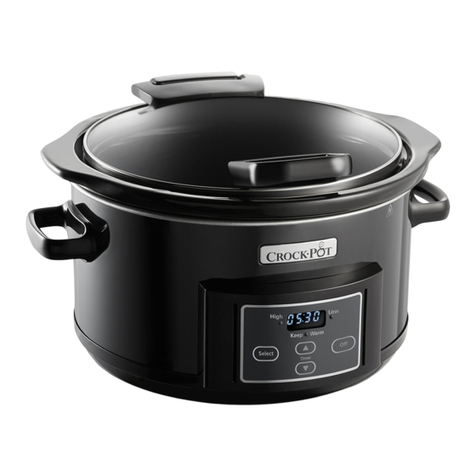
Sunbeam
Sunbeam Crock-Pot CHP550 user guide
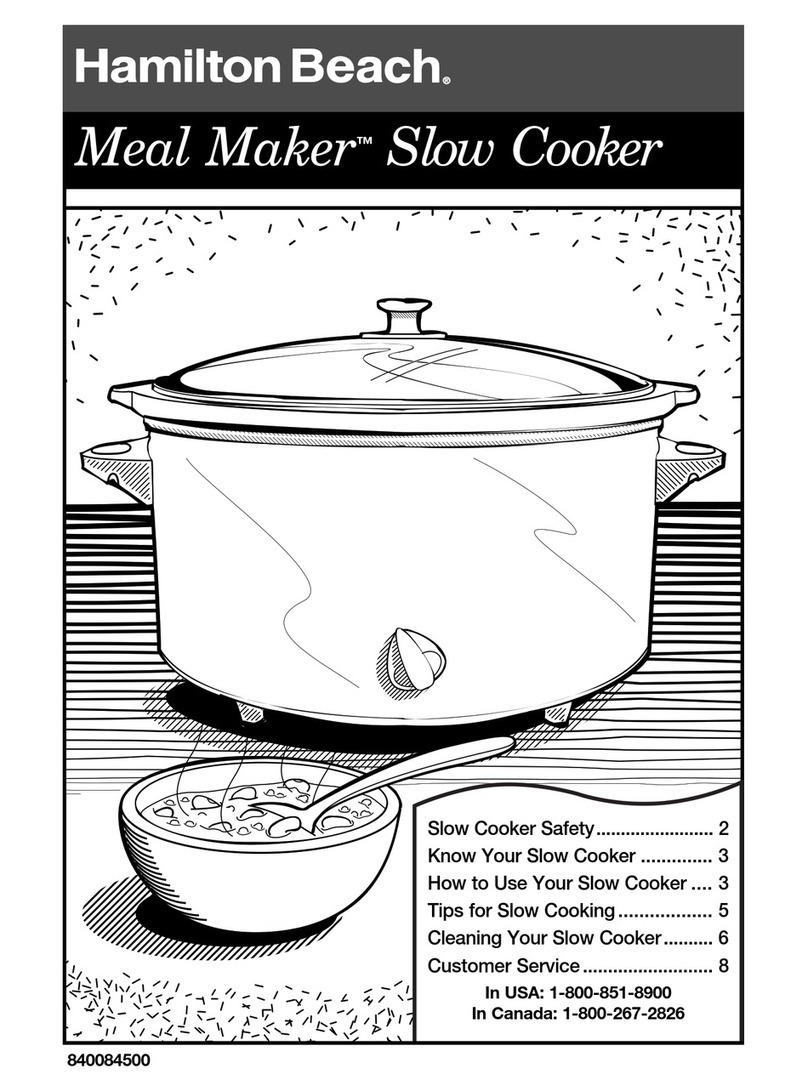
Hamilton Beach
Hamilton Beach 840084500 user manual

Breville
Breville BPR600XL Instruction book
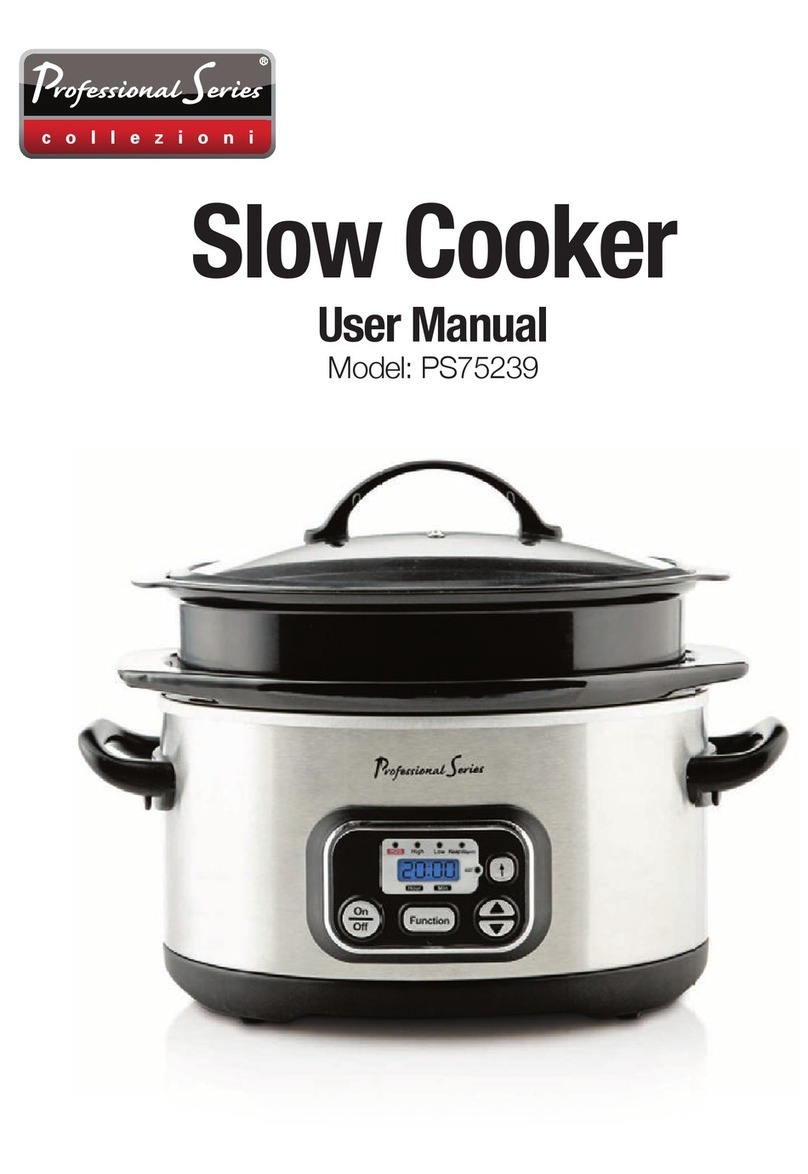
Professional Series
Professional Series PS75239 user manual
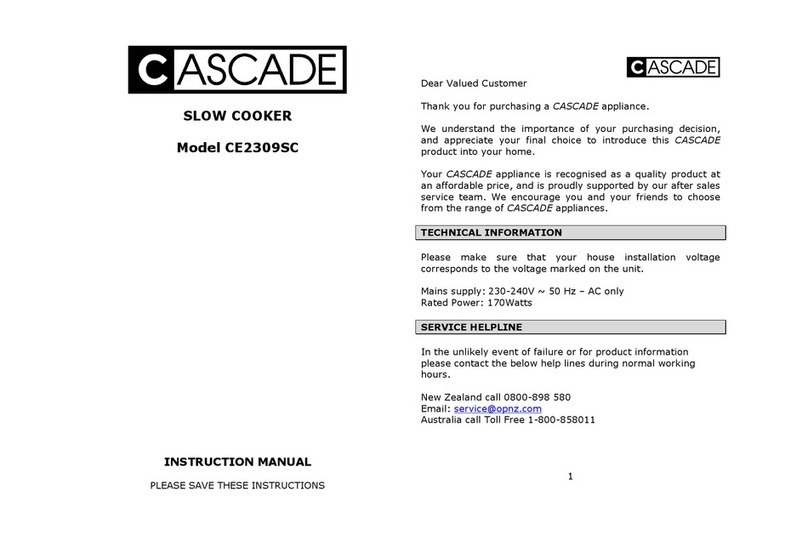
Cascade
Cascade CE2309SC instruction manual
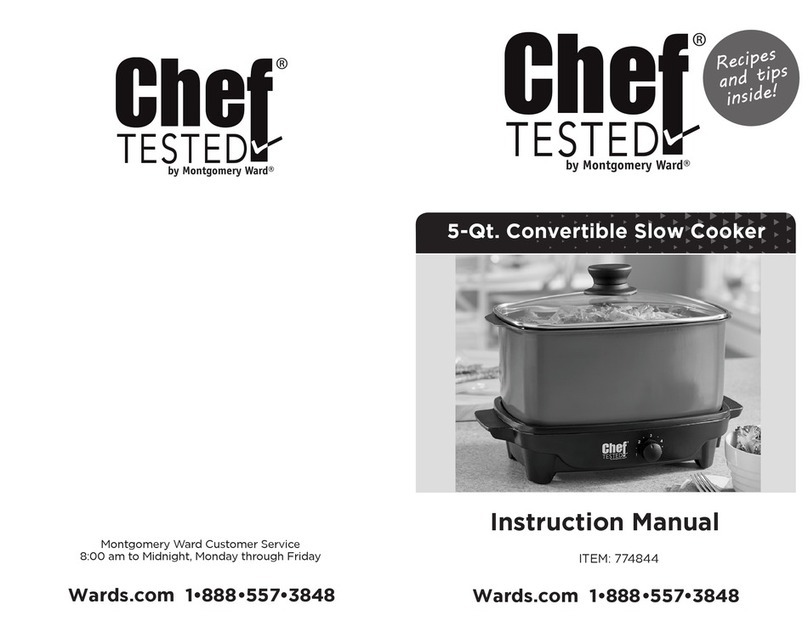
Montgomery Ward
Montgomery Ward Chef Tested 774844 instruction manual
